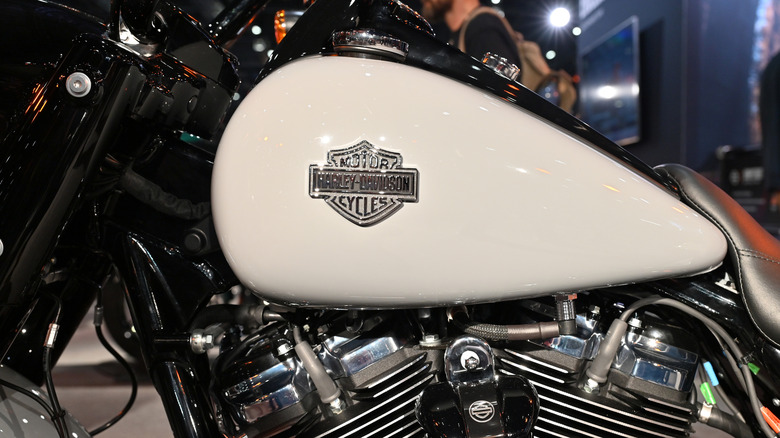As fascinating as it is to flick at a Newton’s Cradle and ponder an idea that would make you infinitely rich, true perpetual motion machines don’t and generally can’t exist. For bikers, then, there are two sobering realities to face: Even the most fuel efficient motorcycles will need to stop for gas sometimes.
Advertisement
A group of bikers riding together, with a long, winding road ahead of them, an engine roaring beneath them and their companions all around them don’t typically want to stop — especially not if they’re astride a gloriously comfortable tourer. Nonetheless, both human and machine will occasionally demand a pitstop.
When such a need strikes, then, a crucial issue is finding a way to communicate it to your fellow riders. As the miles flash by, you might find that your fuel tank starts running low. A simple point towards it can be the quickest and simplest way to tell your companions that you need to stop to top up. If you want to take a closer look at how this specific signal is performed and how a biker group can keep itself in formation and safe as it barrels down the highway en masse, this guide can help.
Advertisement
A simple signal for I need gas
You might have planned the route you’re going to take meticulously. Conditions on the road can be unpredictable, though, and so can a group’s bladders, stomachs, and tanks. With this in mind, riders need to be able to signal to each other what they need, and what they need to do, as appropriate.
Advertisement
One of the most common eventualities, and essentially an inevitability of every ICE-powered bike, is running low on gas. To indicate this to their fellows, motorcyclists may point a finger towards their fuel tank. With that, the group can adjust course to the nearest gas station.
There may be a bit more to the gesture than that, however. A quick pointing motion can be easy to miss in the heat of a ride. The key is to keep things simple enough to understand, yet prominent enough to be unmistakable. The Motorcycle Safety Foundation, with this in mind, specifies that the signal is to be performed “arm out to side pointing to tank with finger extended.”
Harley-Davidson Riding Academy Senior Project Manager Ray Petry has deemed the MSF’s gesture system, according to Harley-Davidson Insurance, to be a “language … that works perfectly fine, and that’s already ‘spoken’ by so many riders.” This language keeps bikers safe and organized in so many other ways too.
Advertisement
Other hand signals that biker groups use on the road
While it’s true that communication features in helmets can allow for easy — well, easier — verbal exchanges on the road, short and snappy gestures can be also work to relay needs while riding. The difficulty here, of course, is that if things aren’t universal, it could be easy to mistake one signal for another. This is why the Motorcycle Safety Foundation has established a set of gestures for just that purpose.
Advertisement
Among the other signals listed by the MSF in its advice for group riders is the signal that somebody needs to answer the call of nature: a subtle vertical movement from an arm outstretched to the side in a tight fist. Advising the party to decelerate can be achieved through this system with an arm outstretched at a right angle, with the palm facing the road. When it’s time to stop, this can be expressed with an elbow up, straight arm and flat palm pointing downwards.
When everyone in the group is familiar with the signals to be used and the corresponding actions to be taken, the trip becomes infinitely safer. Communication, as is the case with any group activity, is key. If you become familiar with the broader silent language of the biker, you’ll know exactly what it means when a motorcyclist flashes you that peace sign.
Advertisement






